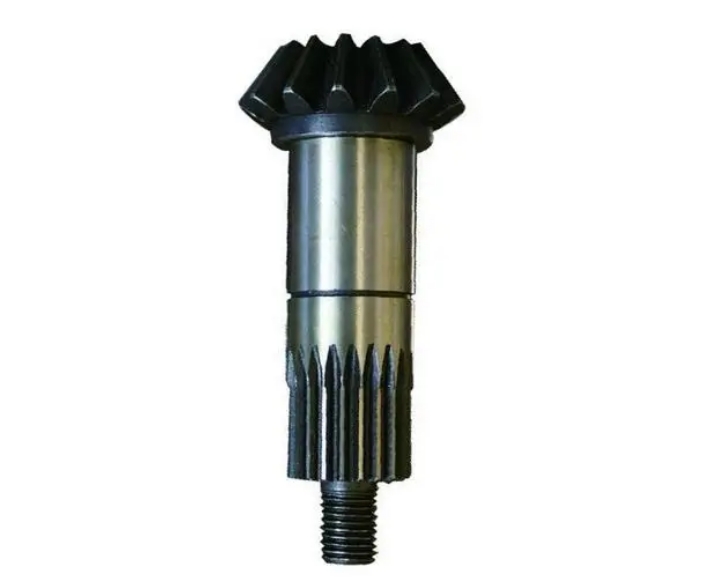
In the fields of mechanical design and manufacturing, keyed shafts and gear shafts are common types of shaft components that play significant roles in transmitting power and motion. Although they share some similarities in functionality, there are distinct differences in their structure, working principles, and applications. This article will provide a detailed comparison of the characteristics of keyed shafts and gear shafts to help engineers and technicians select the appropriate transmission components.
Characteristics of Keyed Shafts
A keyed shaft is a type of shaft component with longitudinal keyways. These keyways can be rectangular, square, or other shapes and are distributed along the axis, forming a special connection structure. The main function of a keyed shaft is to achieve precise positioning and fixation between rotating components while allowing for some axial sliding.
- 1. Structural Features: The keyed shaft's keyways allow it to mate with corresponding keys and key slots, forming a tight connection. This connection can withstand both axial and certain radial forces.
- 2. Transmission Efficiency: Keyed shafts are typically used to transmit smaller torques, and their transmission efficiency is relatively low because the contact area between the keyway and the key is small, leading to greater friction loss.
- 3. Application Scenarios: Keyed shafts are widely used in situations that require precise positioning, such as machine tools and automotive drive systems.
Characteristics of Gear Shafts
A gear shaft, on the other hand, is a shaft component with gears attached. The gears can be straight-toothed, helical, bevel, or of various other types. The primary function of a gear shaft is to transmit power and motion through gear meshing, achieving the conversion of different speeds and torques.
- 1. Structural Features: The gear shaft's gears allow it to mesh with other gears, transmitting power through tooth contact. The type and parameters of the gears can be designed according to requirements to meet different transmission needs.
- 2. Transmission Efficiency: The transmission efficiency of gear shafts is usually higher than that of keyed shafts because the contact area during gear meshing is larger, and the manufacturing precision is higher, resulting in less friction loss.
- 3. Application Scenarios: Gear shafts are widely used in situations that require speed change and torque conversion, such as automotive transmissions and industrial reducers.
Differences Between Keyed Shafts and Gear Shafts
By comparing the characteristics of keyed shafts and gear shafts, we can summarize the following main differences:
- 1. Functional Positioning: Keyed shafts are mainly used for precise positioning and fixation, while gear shafts are primarily used for power transmission and speed conversion.
- 2. Structural Form: Keyed shafts achieve connection through the mating of keyways and keys, whereas gear shafts achieve transmission through gear meshing.
- 3. Transmission Efficiency: The transmission efficiency of gear shafts is typically higher than that of keyed shafts due to the larger contact area and higher manufacturing precision during gear meshing.
- 4. Application Range: Keyed shafts are suitable for situations requiring precise positioning, while gear shafts are suitable for situations requiring speed and torque conversion.
Conclusion
Keyed shafts and gear shafts each have their unique advantages and application scenarios. In practical applications, engineers need to select the appropriate transmission components based on specific working conditions and performance requirements. By deeply understanding the characteristics and differences between keyed shafts and gear shafts, we can design and select transmission systems more accurately, thereby enhancing the overall performance and efficiency of mechanical systems.





 Customer service 1
Customer service 1  Customer service 2
Customer service 2